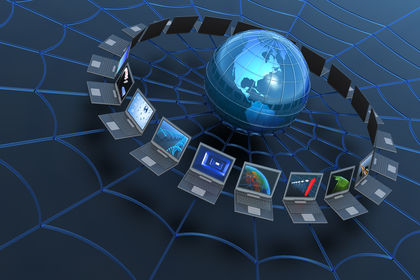http://dekkid.blogspot.comInformation Technology
Some of the advantages of information technology include:
Globalization - IT has not only brought the world closer together, but it has allowed the world's economy to become a single interdependent system. This means that we can not only share information quickly and efficiently, but we can also bring down barriers of linguistic and geographic boundaries. The world has developed into a global village due to the help of information technology allowing countries like Chile and Japan who are not only separated by distance but also by language to shares ideas and information with each other.
Communication - With the help of information technology, communication has also become cheaper, quicker, and more efficient. We can now communicate with anyone around the globe by simply text messaging them or sending them an email for an almost instantaneous response. The internet has also opened up face to face direct communication from different parts of the world thanks to the helps of video conferencing.
Cost effectiveness - Information technology has helped to computerize the business process thus streamlining businesses to make them extremely cost effective money making machines. This in turn increases productivity which ultimately gives rise to profits that means better pay and less strenuous working conditions.
Bridging the cultural gap - Information technology has helped to bridge the cultural gap by helping people from different cultures to communicate with one another, and allow for the exchange of views and ideas, thus increasing awareness and reducing prejudice.
More time - IT has made it possible for businesses to be open 24 x7 all over the globe. This means that a business can be open anytime anywhere, making purchases from different countries easier and more convenient. It also means that you can have your goods delivered right to your doorstep with having to move a single muscle.
Creation of new jobs - Probably the best advantage of information technology is the creation of new and interesting jobs. Computer programmers, Systems analyzers, Hardware and Software developers and Web designers are just some of the many new employment opportunities created with the help of IT.
Some disadvantages of information technology include:
Unemployment - While information technology may have streamlined the business process it has also crated job redundancies, downsizing and outsourcing. This means that a lot of lower and middle level jobs have been done away with causing more people to become unemployed.
Privacy - Though information technology may have made communication quicker, easier and more convenient, it has also bought along privacy issues. From cell phone signal interceptions to email hacking, people are now worried about their once private information becoming public knowledge.
Lack of job security - Industry experts believe that the internet has made job security a big issue as since technology keeps on changing with each day. This means that one has to be in a constant learning mode, if he or she wishes for their job to be secure.
Dominant culture - While information technology may have made the world a global village, it has also contributed to one culture dominating another weaker one. For example it is now argued that US influences how most young teenagers all over the world now act, dress and behave. Languages too have become overshadowed, with English becoming the primary mode of communication for business and everything else.









